The Winemakers Bringing Viticulture Back to Venice
In the unlikely lagoon environment, long-lost grapes grow once again.
Across the 118 islands within the Venetian lagoon, drinking wine has always come more naturally to locals than producing it. For much of its 1,600-year history, Venice has instead prioritized reaping the bounties of the sea: In an old dialectal proverb, a doge—the leader of the Republic—advises his people, “Coltivar el mar e lassar star la tera” (“farm the sea and forget about the land”).
With Venice’s prime maritime location, local produce has long taken a backseat to the exotic treasures brought from trade routes. Those who did farm the land typically did so for personal consumption. Vineyards in particular were largely the domain of wealthy, land-owning families and self-sustaining monks.
Already small-scale, Venetian viticultural traditions came under attack at the turn of the 19th century. In 1797, when Napoleon’s army occupied Venice and its neighboring territories, French forces shuttered the majority of Venetian monasteries and dissolved the seat of the doge. As the Republican symbol of the winged lion was scrubbed from St. Mark’s Square, so too did the tradition of winemaking fade from the lagoon.
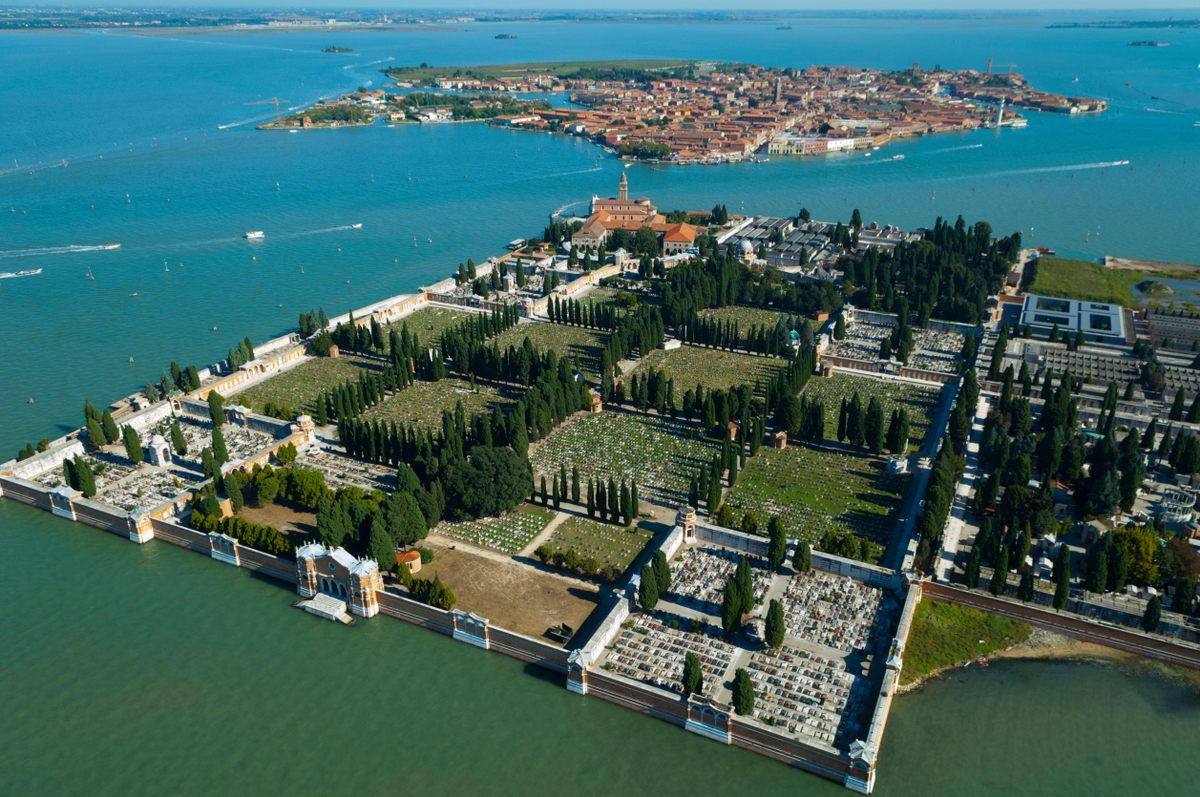
Over the two centuries that followed, the pockets of vineyards that remained were threatened by neglect and high waters, the latter of which ultimately destroyed most remnants of Venetian vines with the great flood of 1966. But in recent years, a handful of passionate Venetian winemakers have been working to better understand its lost viticultural heritage, reviving vines once thought to be extinct and preserving the distinct terroir of the lagoon-based wines.
After Napoleon banned urban burials in Venice in the early 1800s, the newly vacant grounds and vineyards surrounding the former Camaldolese monastery on San Michele Island became a city cemetery. On the banks of this so-called island of the dead, coffins are still off-loaded from water-hearses, set to be interred alongside the likes of Ezra Pound and Igor Stravinsky. Growing defiantly in the far reaches of the island’s northwest corner, however, behind the 15th-century Church of San Michele in Isola lurks a tiny garden where the tradition of Venetian winemaking blooms anew.
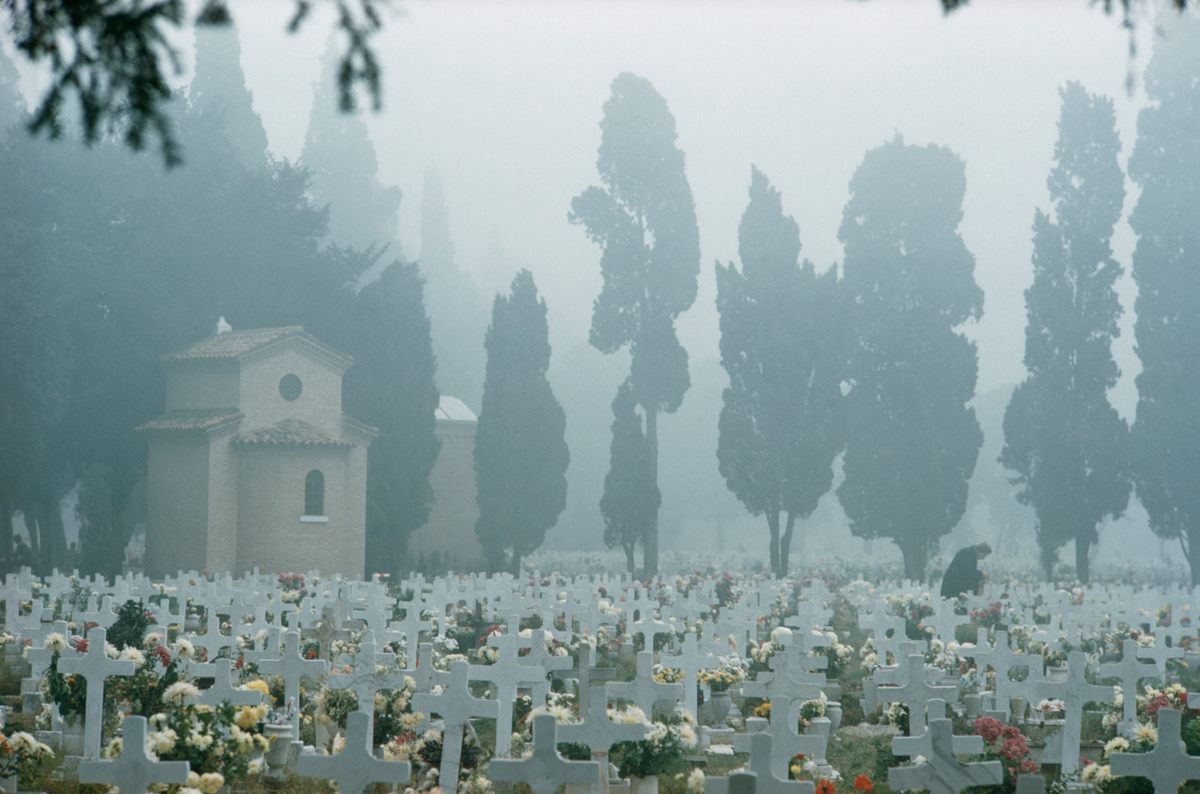
Today, this is the home of Laguna nel Bicchiere (Lagoon in the Glass), a nonprofit organization dedicated to restoring abandoned vineyards throughout the lagoon. The group leased the grounds from the city in 2008, saving the site from abandonment. As Laguna’s late founder Flavio Franceschet told the food and wine magazine Gambero Rosso in 2013, the mission of Laguna nel Bicchiere is simple: “to undertake the recovery of historic vineyards, to experiment with winemaking, to declassify and identify the vineyards…[and to] preserve the scenery and protect the land via the pleasure of food and wine.”
Here, surrounded by the lagoon, volunteers tend to the olive trees and poppies surrounding the old vines they’ve worked to restore. After paring branches, harvesting fruit, stomping, and bottling, they always find time to celebrate their hard work with a few glasses.
Laguna produces small batches of minimally-processed, spontaneously-fermented wines often made from uncommon, local grapes that grow on San Michele as well as other islands in the lagoon. Their current lineup includes a sapid white, “San Michele in Purity,” made from three local varietals sprouting from the convent’s brackish loam; “Bacò of the Witch,” made with a hyper-acidic hybrid red grape once banned, nearly abandoned, and now grown behind a pizzeria in the center of the city; and the whimsically-named “Turgid Vignole in the Wind,” a blend of regional white grapes, including golden verduzzo and glera, grown on the island of Vignole (so named for its own erstwhile tradition of wine production).
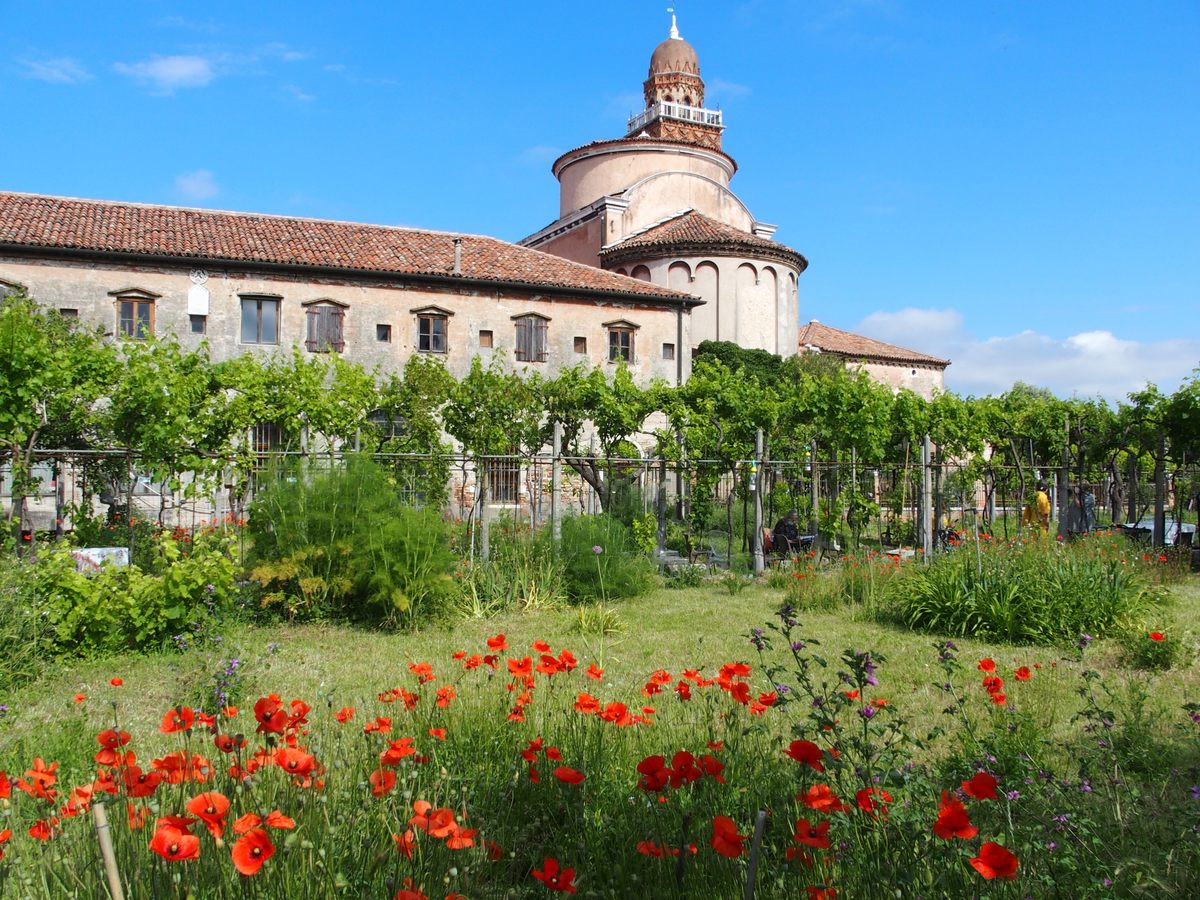
Despite their unique catalog, the quality of Laguna’s wine is, in a way, beside the point. “It’s merely a means of preserving traditions,” says Renzo De Antonia. The association’s president, he views education to be Laguna’s priority. Its various initiatives range from a five-year agricultural course with local schoolchildren to a correspondence program with students in Kenya (part of Slow Food’s 10,000 Gardens in Africa program) to informational tastings with tourists.
Laguna considers its efforts to be part of a larger movement toward fostering more traditional, low-impact, and pesticide-free farming in Venice, where the ecological balance is already delicate and threatened by climate change. With rising sea levels that regularly submerge its monuments and threaten to sink the city, the future of Venice, and its wines, is uncertain. But even amid the rising waters, recent discoveries have shown there is a golden glimmer of hope.
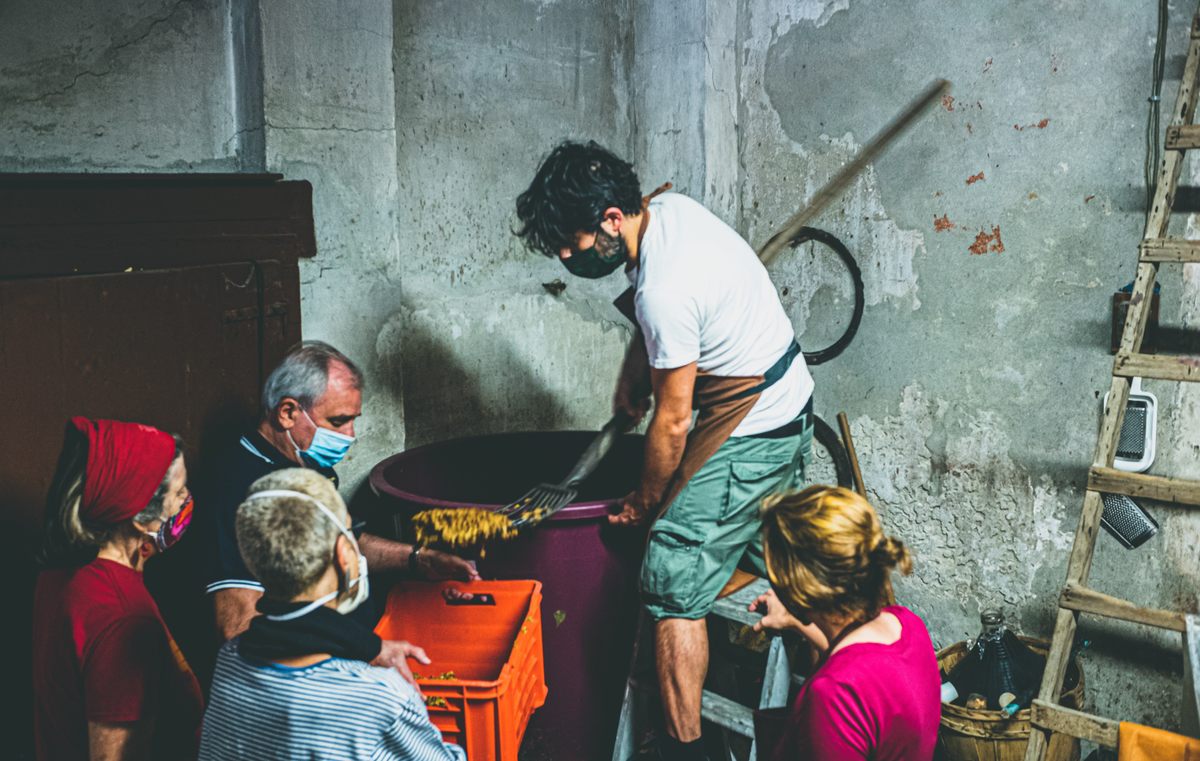
East of San Michele, in the center of the lagoon, the island of Sant’Erasmo has traditionally been known as the city’s garden, providing it with the lion’s share of local produce, from grapes to its prized violet artichoke. With the great flood of 1966, however, the island was completely submerged, its crops withering under days of standing saltwater. Where most farmers had little choice but to seek new employment, one man was unwilling to desert a particular local crop: a grape he could not identify but had enjoyed for years.
The farmer worked tirelessly at getting his patch of salty land primed for harvest and eventual fermentation before bequeathing the property, and the particular process required to make wine from it, to his daughter and her husband. His son-in-law, a farmer named Gastone Vio, felt a similar drive to keep these vines alive, despite their exceptionally low yield.
Vio spent many years on Sant’Erasmo producing a wine based on the mysterious grapes and, only after a decade of laboratory analysis, was his hard work validated: His family’s land contained what may have been the last known example of dorona, a mysterious grape that may have been once been prized by the doges of yore, but was believed to be extinct.
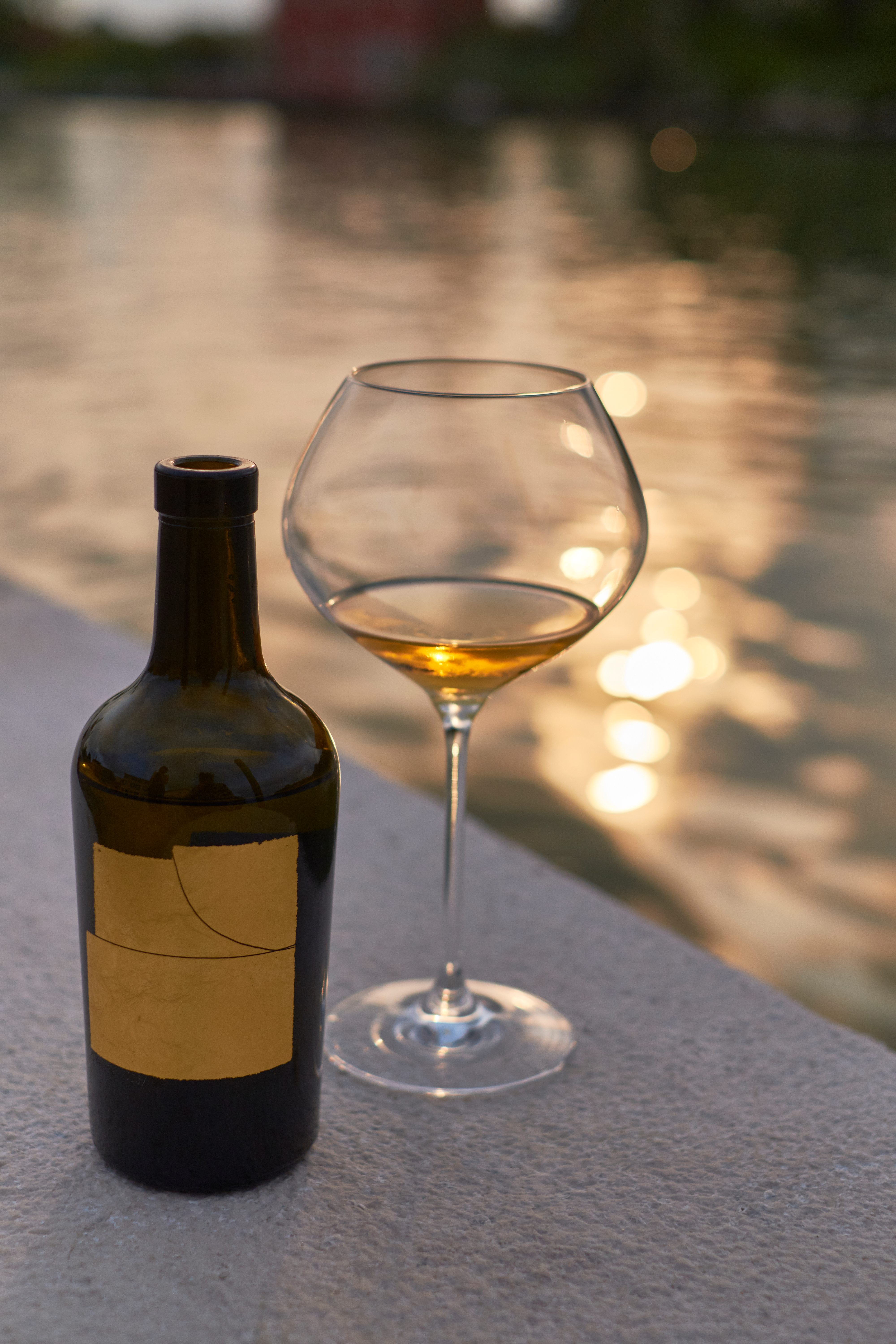
Named for its particular color (d’oro means “golden” in Italian) and often confused with other similarly-hued varietals, the dorona has a murky history. Since Venetian grapes weren’t always clearly identified in records, it’s difficult for scholars to pinpoint its exact origins, though some believe it dates back to ancient Rome. Uniquely adapted to the lagoon’s salinity, which often puts a strain on plants, the dorona is a hardy grape that yields a rustic, golden wine with a salty nose and considerable body.
Recognizing that the vine’s adaptations impart the wine’s distinct terroir, Vio allows nature to dictate a low-intervention production process that’s free from additives and uses native, spontaneous yeasts. “You have to do what the grape wants, what the vine wants, not what you want,” he told Slow Food in a 2019 video.
Though this winemaking process is relatively hands-off, the cultivation of the vine itself is quite demanding. Under the strain of salt, its rootstock sent sprawling in search of water, the plant’s vines bear fruit less efficiently than more common varietals and demand more land in a region where green space is already quite rare.
Sprouting from the brackish waters, left to ferment with yeasts that naturally occur in the sea air, the dorona simply couldn’t be produced anywhere else. Laguna’s De Antonia believes that these salty, restrictive growing conditions may keep it from being a truly “great” wine, but it is fundamentally an expression of the lagoon and its history.
Vio produced a limited run of dorona wine with Laguna nel Bicchiere in 2013 and launched his own commercial line earlier this year. Though he is no longer the lone producer on Sant’Erasmo, with French-owned Orto Winery producing a white blend on site as well, he is credited with mastering the whims of the dorona and ensuring its survival. As the dorona achieves more fame, winemakers hope that Vio’s particular brand of agrology will provide a roadmap for how to cultivate in similarly adverse conditions caused, for example, by rising tides.

Beyond the cultural and historical significance of preserving local varietals, the dorona has also become a draw for tourists visiting the lagoon, serving as the centerpiece for one of the region’s exclusive culinary destinations. In 2002, Gianluca Bisol, head of a prosecco-producing dynasty, stumbled upon a different plot of dorona, on the island of Torcello. Following Vio’s guidance in cultivating his own crop, Bisol later transferred clones of the vine to a medieval convent garden on the nearby island of Mazzorbo. There, he founded Venissa, an opulent wine resort built around the dorona and focused on farming and dining that’s hyperlocal and sustainable.
For Venissa’s Michelin-starred restaurant, this means a menu that features produce from an on-site garden as well as invasive species from the lagoon, such as the blue crab. Their flagship dorona wine, which comes in a gold leaf–adorned bottle, may stand in contrast to Laguna’s modest offerings, given its prestige and price, but the Bisol family considers that very elite status to be part of Venice’s move toward a better future.
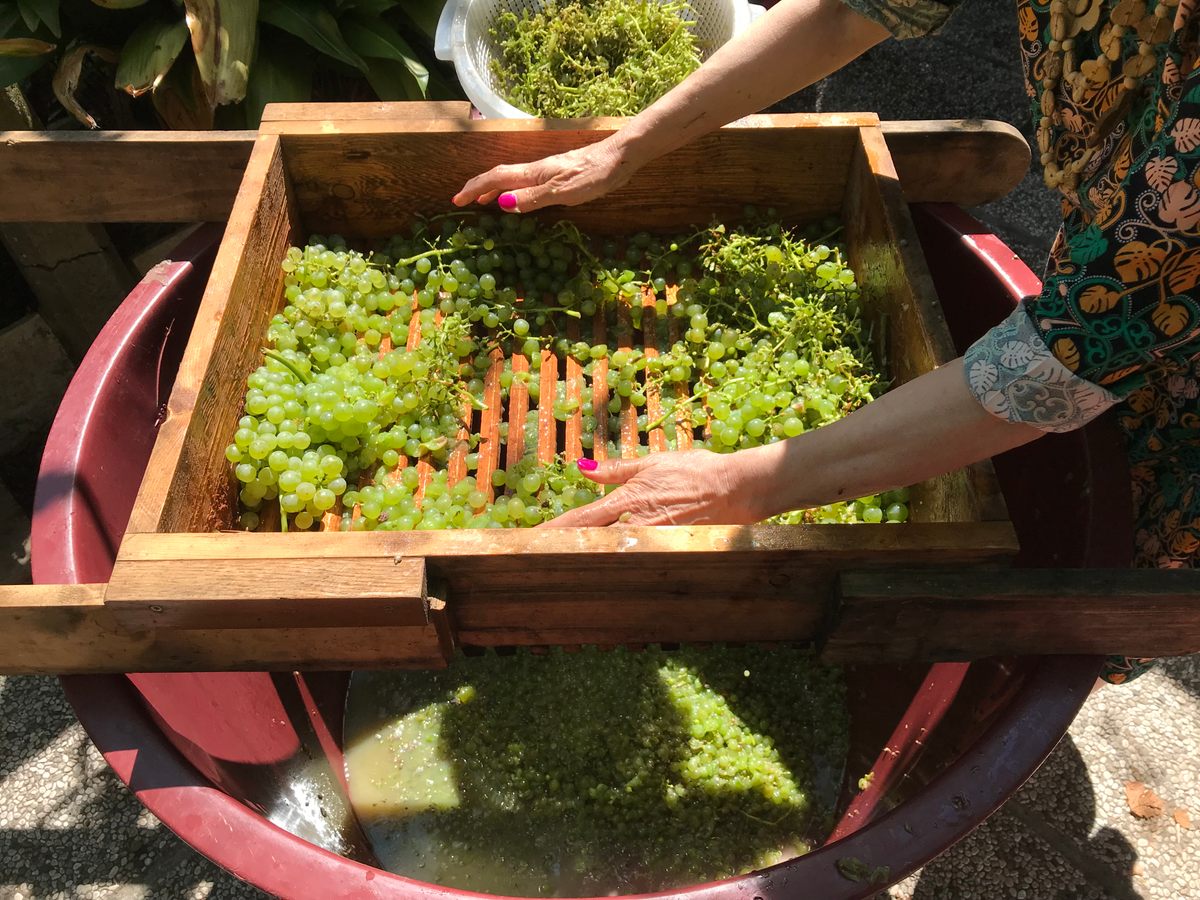
Matteo Bisol runs Venissa’s winery. He speaks with reverence of the region’s winemaking history while acknowledging the importance of maintaining a light ecological footprint to ensure its future. While years of over-tourism have had an adverse impact on the lagoon’s ecosystem, Bisol still believes tourism’s economic impact is essential to Venice. “I always say that without tourists, Venice would die,” he says. “The things that make it beautiful would no longer exist.”
He sees his operation as a balancing act between promoting tourism to benefit the local economy while also being sustainable and healthy for the local environment. Take the rare seafood of the lagoon: Too expensive for most locals, Bisol argues that the Venetian economy, and by extension its ecosystem, thrives because tourists are willing to splurge where locals aren’t (or can’t).
For example, visitors interested in tasting moeche, the seasonal soft-shell green crab unique to Venice that’s directly threatened by its blue counterpart, must pay for the significant labor and skill required of moecanti, experts who can spot and sort a molting crab from others. Bisol believes this quality-over-quantity approach helps protect the lagoon from being overfished.
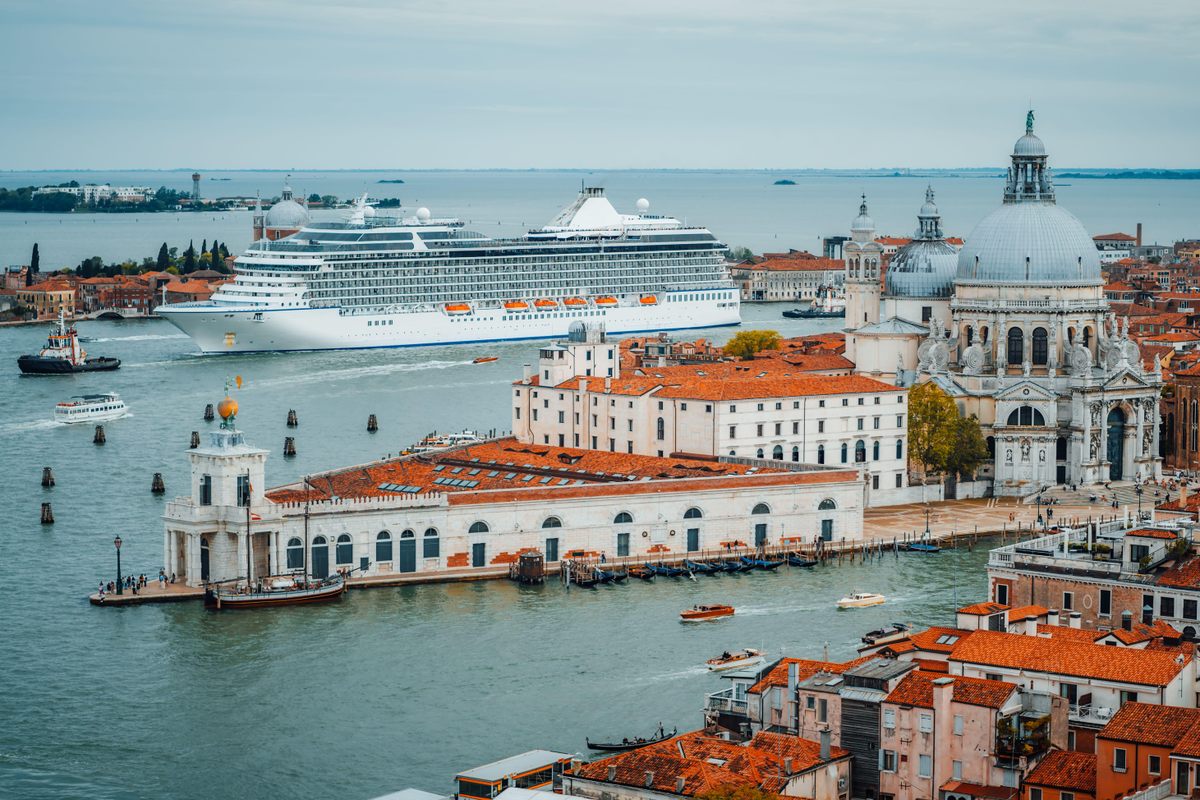
Both Bisol and Laguna’s De Antonia share a vision for a new kind of local tourism industry, focusing on small-scale, high-quality experiences in place of the type of hop-on, hop-off mass tourism brought in through cruise ships. Such practices gum up major thoroughfares and contribute to the sinking and erosion that haunts the city’s future. Tourism will always be a fundamental part of Venice’s economy, but if visitors come less often, stay longer, and support the continued restoration of the city’s agronomic traditions, in theory, everyone wins.
The ecological problems facing the city are much bigger than a glass of wine can solve. Still, by producing and promoting wines tied inextricably to Venice’s unique history and ecosystem, Laguna nel Bicchiere, Venissa, and their peers hope to share an appreciation for nature and its fragility with locals and visitors alike. Respecting the lagoon for its power to give and take away, these vintners can only hope that future generations will be able to enjoy a glass of peculiarly saline wine in one of the most beautiful cities on Earth.
Gastro Obscura covers the world’s most wondrous food and drink.
Sign up for our regular newsletter.








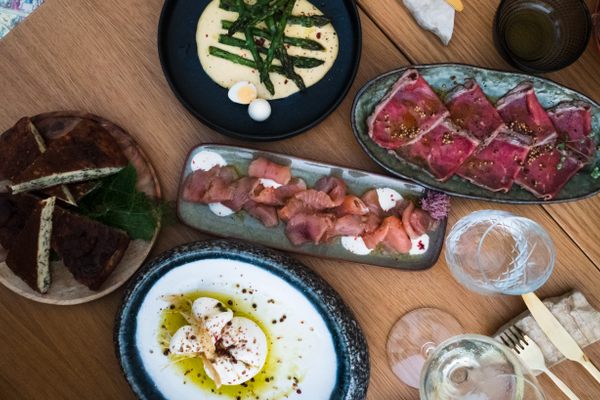

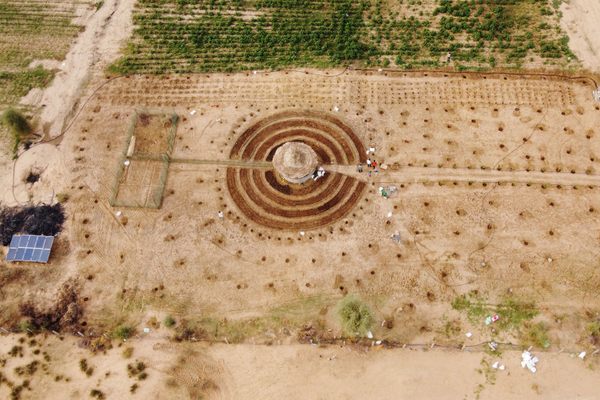
















Follow us on Twitter to get the latest on the world's hidden wonders.
Like us on Facebook to get the latest on the world's hidden wonders.
Follow us on Twitter Like us on Facebook